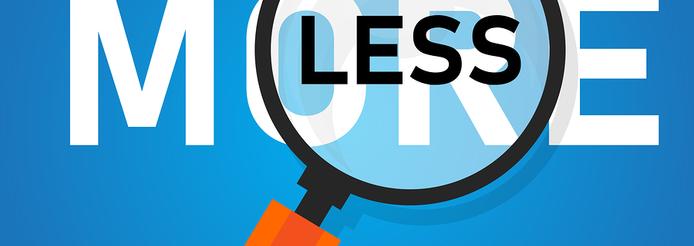“Anyone who launches new products will immediately appreciate the power of this resource to influence design direction, target appropriate price points, and select materials with high consumer appeal. What I love most is that it facilitates open and powerful discussions across the marketing, design and business teams. It minimizes reliance on “the gut feel” of just one individual in an organization and helps create a unified vision for success.”

Sometimes It is. Sometimes it Isn’t!
I first heard the phrase “less is more” from my first boss in the 1980’s. I thought it a clever remark then and I have often pondered its value since. If the context is to net out information to get to the key information for decision-makers, then yes, less is more. Another of my early bosses had a plaque behind his desk that read “I don’t want people who can recite problems, I want people who can present solutions.” I took that to heart and never went to him with a problem, only with solutions to problems that I presented in a less information is more context.
Sometimes a problem is too complicated for a less is more summary. It is rare to find a product category that has only one type of customer and therefore only one set of customer needs. Less can’t be more if the target audience is really five targets with differing needs. A product that appeals to multiple audiences with different needs may be great as is…or may need to be five products that better fit each of those needs. And if it doesn’t fit each of those needs, chances are good that someone else will identify and fit those needs thus prying away market share from the original product.
We intuitively know that the same is true of design. Less is not always more in terms of design array. Many categories have a wealth of decorative designs that are renewed frequently. No one would suggest that one design fits an entire need set.
So how to tread the line between too little and too much information, too little and too much product, too little and too much design?
Research can shed a lot of light on what is just right for each specific market – not too much or too little. Herbert Simon, a Nobel winning economist invented the concept of “satisficing.” Satisficing means to do just enough research and analysis to identify the scope of an issue and to satisfy yourself that you have done a good enough job of exploring the meaningful alternatives. Don’t get into an analysis paralysis situation. Identify the key issues, address them and move on. The same is true for products and design. Identify the key reasons why consumers buy a product and make products that address those needs. Identify the key design directions that consumers like most and create designs that address those niches.
Design Research can help you to do all of these things, thus informing your decision-making without overwhelming it. We can deliver the answers to the key questions that your staff spends too much time discussing and debating, possibly over and over again, because we have real marketplace answers. We can deliver quantitative answers that finally put to bed everyone’s competing theories and mother-in-law based experiences.
Call (609-896-1108) or email us (Rick@designres.com Janine@designres.com) today to get to the heart of the issues you face.



